Themed collection Metallodrugs: Activation, Targeting, and Delivery

Themed Issue on “Metallodrugs: Activation, Targeting, and Delivery”
Welcome to this themed issue of Dalton Transactions entitled “Metallodrugs: Activation, Targeting and Delivery”.

Dalton Trans., 2016,45, 12965-12965
https://doi.org/10.1039/C6DT90135B
Dr Barnett Rosenberg – a Personal Perspective
This tribute to Dr Rosenberg is especially fitting, as an introduction to this themed issue, since the discovery of Cisplatin has not only had an enormous impact on the practice of modern day cancer chemotherapy, it has also promoted the explosive growth and maturity of the field of contemporary bioinorganic chemistry.
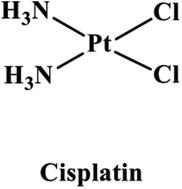
Dalton Trans., 2016,45, 12966-12969
https://doi.org/10.1039/C6DT02152B
The Platin-X series: activation, targeting, and delivery
In this review, we discuss the attempts made by our lab to develop Pt(IV) prodrugs that can be activated and delivered using targeted nanodelivery systems.
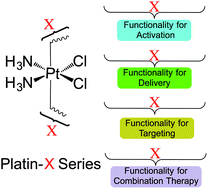
Dalton Trans., 2016,45, 12992-13004
https://doi.org/10.1039/C6DT01738J
Platinum(IV) anticancer prodrugs – hypotheses and facts
Do we really know how “dual action” Pt(IV) work?
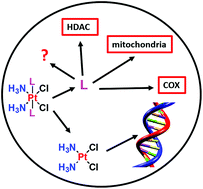
Dalton Trans., 2016,45, 12983-12991
https://doi.org/10.1039/C6DT01414C
Peptide-mediated vectorization of metal complexes: conjugation strategies and biomedical applications
The rich chemical and structural versatility of transition metal complexes provides numerous novel paths to be pursued in the design of molecules that exert particular chemical or physicochemical effects that could operate over specific biological targets.
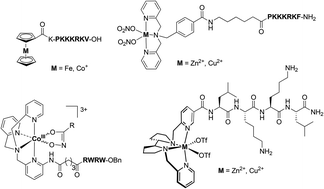
Dalton Trans., 2016,45, 12970-12982
https://doi.org/10.1039/C5DT04529K
Upconverting nanoparticles for the near infrared photoactivation of transition metal complexes: new opportunities and challenges in medicinal inorganic photochemistry
The article highlights the emergent use of upconverting nanoparticles as tools for the near infrared photoactivation of transition metal complexes.
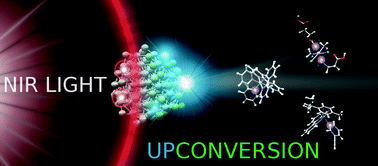
Dalton Trans., 2016,45, 13012-13020
https://doi.org/10.1039/C6DT01428C
Development of trackable metal-based drugs: new generation of therapeutic agents
Today, it is not sufficient to conceive an efficient drug, its mechanism of action have to be understood. To tackle this issue, trackable therapeutic agents are an interesting solution.

Dalton Trans., 2016,45, 13005-13011
https://doi.org/10.1039/C5DT04275E
An acid-cleavable phthalocyanine tetramer as an activatable photosensitiser for photodynamic therapy
A novel self-quenched phthalocyanine tetramer has been prepared which can be activated in acidic environments, resulting in enhanced fluorescence emission and singlet oxygen production.
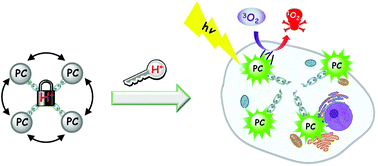
Dalton Trans., 2016,45, 13021-13024
https://doi.org/10.1039/C6DT02283A
Derivatisation of buforin IIb, a cationic henicosapeptide, to afford its complexation to platinum(II) resulting in a novel platinum(II)–buforin IIb conjugate with anti-cancer activity
Herein we report the synthesis and anti-cancer activity of buforin IIb, its novel malonate derivative malBuf and its Pt(II) complex cis-[Pt(NH3)2(malBuf–2H)].

Dalton Trans., 2016,45, 13038-13041
https://doi.org/10.1039/C6DT01510G
Spin-labelled photo-cytotoxic diazido platinum(IV) anticancer complex
We report the synthesis and characterisation of the nitroxide spin-labelled photoactivatable Pt(IV) prodrug trans,trans,trans-[Pt(N3)2(OH)(OCOCH2CH2CONH-TEMPO)(Py)2] (Pt-TEMPO).
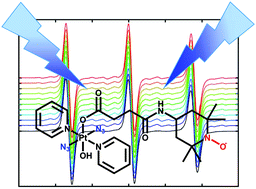
Dalton Trans., 2016,45, 13034-13037
https://doi.org/10.1039/C6DT01382A
Towards 99mTc-based imaging agents with effective doxorubicin mimetics: a molecular and cellular study
99mTc and Re conjugates of Doxorubicin accumulate in the nucleus, bind tightly to DNA and retain hTopoII inhibition.
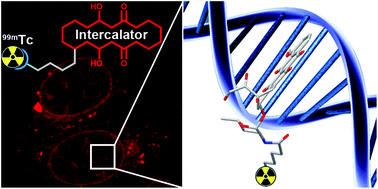
Dalton Trans., 2016,45, 13025-13033
https://doi.org/10.1039/C6DT00871B
Near infrared light-mediated photoactivation of cytotoxic Re(I) complexes by using lanthanide-doped upconversion nanoparticles
Photoactivation of cytotoxic Re(I) complexes by using lanthanide doped upconversion nanoparticles upon near infrared illumination was demonstrated to selectively activate Re(I) complexes in tumor cells for enhanced anti-cancer effect.

Dalton Trans., 2016,45, 14101-14108
https://doi.org/10.1039/C6DT01569G
Photoactive platinum(II) β-diketonates as dual action anticancer agents
Cyclometallated platinum(II) β-diketonates show significant photocytotoxicity in skin-keratinocyte HaCaT cells [IC50: ∼10 μM (visible light, 400–700 nm), ≥60 μM (dark)].
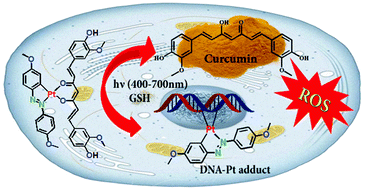
Dalton Trans., 2016,45, 13234-13243
https://doi.org/10.1039/C6DT02590K
Light-triggered CO delivery by a water-soluble and biocompatible manganese photoCORM
Careful design of the coligand of the photoCORM [MnBr(CO)3(pyTAm)] makes it highly stable and soluble in aqueous media and allows light-induced CO release to biological targets.
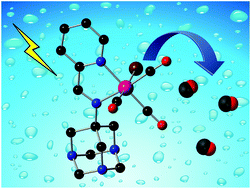
Dalton Trans., 2016,45, 13204-13213
https://doi.org/10.1039/C6DT01358A
Remote-controlled delivery of CO via photoactive CO-releasing materials on a fiber optical device
Although carbon monoxide (CO) delivery materials (CORMAs) have been generated, remote-controlled delivery with light-activated CORMAs at a local site has not been achieved.
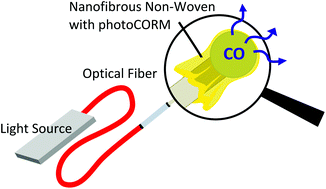
Dalton Trans., 2016,45, 13222-13233
https://doi.org/10.1039/C6DT02011A
An upconversion nanoplatform for simultaneous photodynamic therapy and Pt chemotherapy to combat cisplatin resistance
Combined photodynamic therapy and Pt chemotherapy based on upconversion nanoparticles are very effective in killing cisplatin-resistant cancer cells.
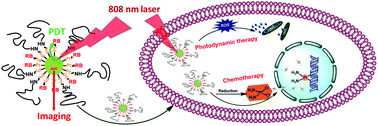
Dalton Trans., 2016,45, 13052-13060
https://doi.org/10.1039/C6DT01404F
M2L4 coordination capsules with tunable anticancer activity upon guest encapsulation
Guest encapsulation can modulate the cytotoxicity of anthracene-based nano-capsules and broaden their applications from metallodrugs to biocompatible delivery systems.
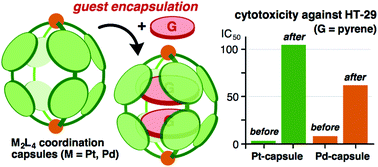
Dalton Trans., 2016,45, 13214-13221
https://doi.org/10.1039/C6DT01801G
Cytotoxic hydrogen bridged ruthenium quinaldamide complexes showing induced cancer cell death by apoptosis
This report presents the first known p-cymene ruthenium quinaldamide complexes stabilised by a hydrogen-bridging atom, which are cytotoxic and show induced cancer cell death by apoptosis.
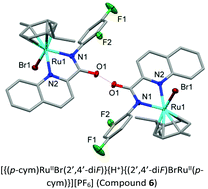
Dalton Trans., 2016,45, 13196-13203
https://doi.org/10.1039/C6DT01464J
Hydroxyapatite nanocrystals as a smart, pH sensitive, delivery system for kiteplatin
Synthetic hydroxyapatite nanocrystals are proposed as a pH-sensitive carrier capable to release an antitumor platinum-drug selectively at the tumor site.

Dalton Trans., 2016,45, 13187-13195
https://doi.org/10.1039/C6DT01976E
Anticancer potential of a photoactivated transplatin derivative containing the methylazaindole ligand mediated by ROS generation and DNA cleavage
Photoinduced DNA damage by trans-[PtCl2(NH3)(1-methyl-7-azaindole)] is related to its photocytotoxic activity.
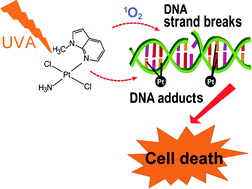
Dalton Trans., 2016,45, 13179-13186
https://doi.org/10.1039/C6DT01467D
Gallium(III) and iron(III) complexes of quinolone antimicrobials
In an attempt to combine the antimicrobial properties of Ga3+ and quinolone antimicrobial agents, tris(quinolono)gallium(III) complexes were prepared. In the style of the Ga3+vs. Fe3+ “Trojan Horse” hypothesis, the bactericidal efficacy of these gallium(III) complexes was evaluated in direct comparison to their iron(III) analogs.

Dalton Trans., 2016,45, 13146-13160
https://doi.org/10.1039/C6DT01315E
Dual-drug loaded nanoformulation with a galactosamine homing moiety for liver-targeted anticancer therapy
A platinum(IV) complex was prepared as a prodrug of cisplatin and co-loaded with α-tocopheryl succinate into the galactosamine-modified PLGA nanoparticle for combinational chemotherapy of liver cancer.
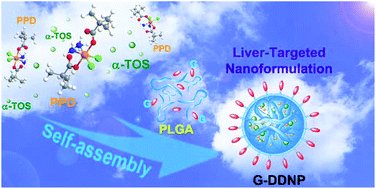
Dalton Trans., 2016,45, 13169-13178
https://doi.org/10.1039/C6DT01434H
A multi-target caffeine derived rhodium(I) N-heterocyclic carbene complex: evaluation of the mechanism of action
A rhodium(I) and a ruthenium(II) complex with a caffeine derived N-heterocyclic carbene (NHC) ligand were biologically investigated as organometallic conjugates consisting of a metal center and a naturally occurring moiety.

Dalton Trans., 2016,45, 13161-13168
https://doi.org/10.1039/C6DT02025A
The length of the bridging chain in ansa-metallocenes influences their antiproliferative activity against triple negative breast cancer cells (TNBC)
[n]Ferrocenophane and [n]ruthenocenophane derivatives have been synthesized and their antiproliferative activity evaluated against MDA-MB-231 cells.
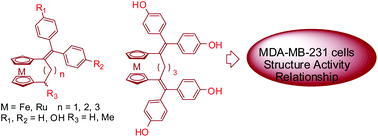
Dalton Trans., 2016,45, 13126-13134
https://doi.org/10.1039/C6DT01640E
Linker design for the modular assembly of multifunctional and targeted platinum(II)-containing anticancer agents
A versatile modular-synthetic scheme based on cleavable amide–ester linkers allows incorporation of platinum–acridines into multifunctional and targeted anticancer agents.
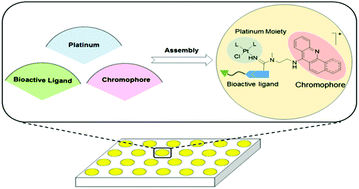
Dalton Trans., 2016,45, 13104-13113
https://doi.org/10.1039/C6DT01399F
Synthesis, characterization and biological evaluation of labile intercalative ruthenium(II) complexes for anticancer drug screening
[Ru(tpy)(N^N)Cl]+ were synthesized for anticancer evolution. Ru2–Ru4 were dual-mode DNA-binding complexes and exhibited higher DNA binding affinity, better cellular uptake efficiency and higher anticancer activity than Ru1.
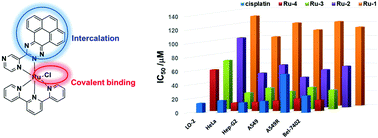
Dalton Trans., 2016,45, 13135-13145
https://doi.org/10.1039/C6DT01270A
Antiproliferative activity of ruthenium(II) arene complexes with mono- and bidentate pyridine-based ligands
The antitumour activity of RuII arene complexes with N-donor ligands is realised through inhibition of cell division accompanied by caspase-dependent apoptosis.
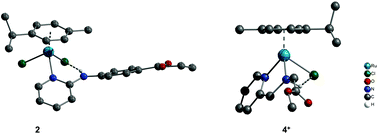
Dalton Trans., 2016,45, 13114-13125
https://doi.org/10.1039/C6DT01782G
Towards targeting anticancer drugs: ruthenium(II)–arene complexes with biologically active naphthoquinone-derived ligand systems
2-Hydroxy-[1,4]-naphthoquinone-derived ligands and their RuII(η6-p-cymene)Cl complexes were prepared with the aim to obtain multimodal anticancer agents.
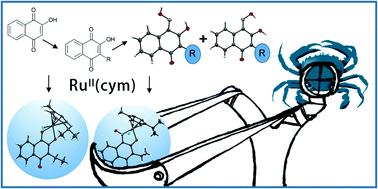
Dalton Trans., 2016,45, 13091-13103
https://doi.org/10.1039/C6DT01110A
Evaluation of H2CHXdedpa, H2dedpa- and H2CHXdedpa-N,N′-propyl-2-NI ligands for 64Cu(II) radiopharmaceuticals
Hexadentate acyclic chelate H2CHXdedpa and related N,N′-alkylated ligands are radiolabeled with radioactive 64Cu(II) under mild conditions forming kinetically inert complexes.
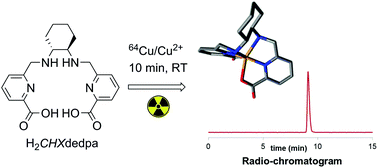
Dalton Trans., 2016,45, 13082-13090
https://doi.org/10.1039/C6DT00932H
Coumarin-appended phosphorescent cyclometalated iridium(III) complexes as mitochondria-targeted theranostic anticancer agents
Three phosphorescent cyclometalated iridium(III) complexes with mitochondria-specific localization and apoptosis-inducing capability have been explored as the theranostic anticancer agents.
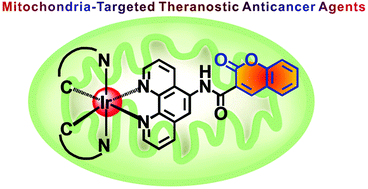
Dalton Trans., 2016,45, 13042-13051
https://doi.org/10.1039/C6DT00601A
Encapsulation of lipophilic kiteplatin Pt(IV) prodrugs in PLGA-PEG micelles
PLGA-PEG nanoparticles loaded with Pt(IV) prodrugs of kiteplatin boost the antitumor effect of the drug and reduce its toxicity.
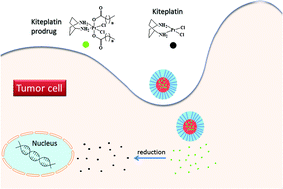
Dalton Trans., 2016,45, 13070-13081
https://doi.org/10.1039/C6DT00763E
808 nm photocontrolled UCL imaging guided chemo/photothermal synergistic therapy with single UCNPs-CuS@PAA nanocomposite
Recently, incorporating multiple components into one nanostructured matrix to construct a multifunctional nanomedical platform has attracted more and more attention for simultaneous anticancer diagnosis and therapy.
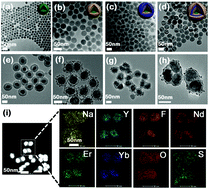
Dalton Trans., 2016,45, 13061-13069
https://doi.org/10.1039/C5DT04857E
About this collection
In 1965, a seminal paper by Barnett Rosenberg appeared in Nature, describing the anti-proliferative properties of a very simple inorganic compound, now known to all of us as Cisplatin. This discovery, and the subsequent clinical approval of Cisplatin, has led to thousands of papers, and it has arguably initiated the field of medicinal inorganic chemistry. Now, 50 years after Rosenberg's discovery, the field has matured and, beyond Cisplatin, many other compounds have been explored for their anti-proliferative activity. Moreover, chemical creativity has shifted from the mere discovery of new active agents, and elucidation of their mode of action (as difficult as that may be at times) to issues such as delivery of anti-proliferative agents to cancer cells, activation of inorganic prodrugs, and very creative approaches to targeting malignant cells exclusively.
This Themed Issue aims to explore the frontiers in the art of medicinal inorganic chemistry. Crucially, the Issue will aim to provide an overview of current progress in three focal points of inorganic drug development: activation (for example, by light, enzymes or external stimuli), targeting (that is, bioconjugates, using the EPR effect, and so on) or selective delivery (to cancer cells or intra-cellularly, by nanoparticles or other carrier systems, and so on).